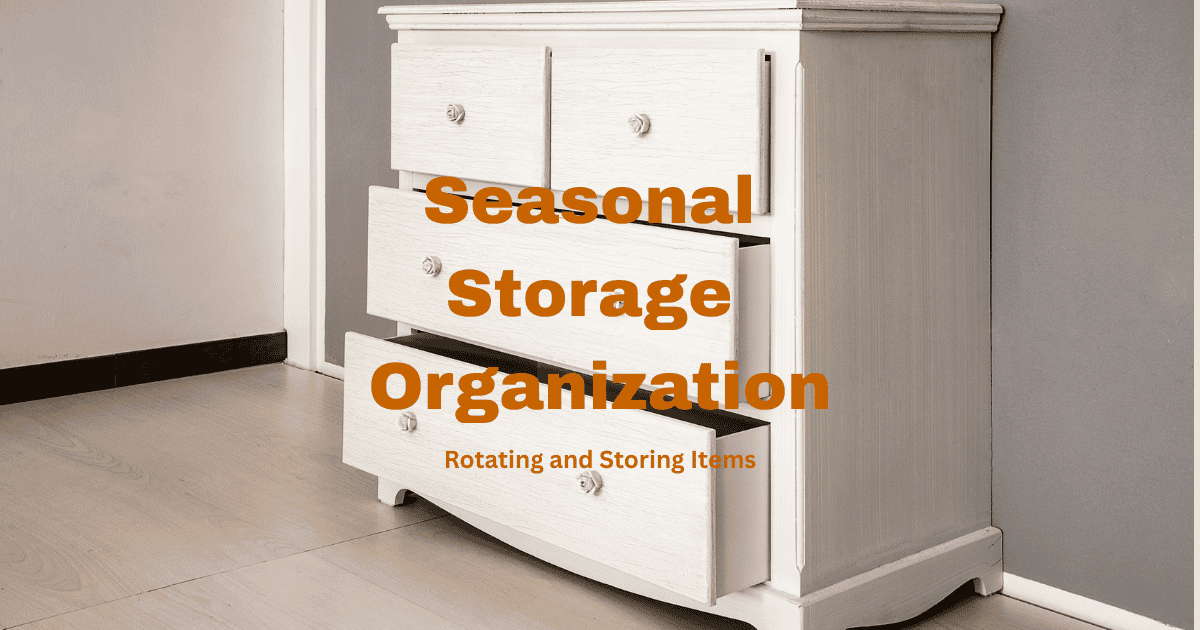As the seasons change, so do your household needs. From winter coats and holiday décor to summer sports gear and gardening tools, managing seasonal items efficiently can make a dramatic difference in your home’s organization and your peace of mind.
Here you’ll find the best strategies for rotating and storing seasonal items, filling the gaps left by most articles and helping you keep your space clutter-free year-round.
Key Takeaways
- Successful seasonal organization starts with decluttering and sorting items by season and category.
- Use clear, labeled bins and dedicated zones to make rotating items fast and frustration-free.
- Protect your belongings with the right containers and climate considerations.
Step 1: Inventory and Sort Seasonal Items
Before storing, take a thorough inventory of all your seasonal items—clothing, décor, outdoor gear, and more. Create a list of your belongings, categorizing items by season (winter, spring, summer, fall), and organize them into categories such as clothing, decorations, sports equipment, and gardening tools.
Pro Tip: Declutter as you go. Donate or discard anything you didn’t use last season or that is damaged beyond repair.
Step 2: Clean and Prepare for Storage
Clean all items thoroughly before storing to prevent dirt, odors, and damage. Wash and dry clothing, linens, and fabrics. Wipe down outdoor gear and decorations. Ensure everything is completely dry to prevent mold and mildew.
Repair before storing: Fix broken items or replace missing parts so everything is ready to use next season.
Step 3: Choose the Right Storage Solutions
Clear, Sturdy Bins:
Use clear plastic bins for most seasonal items—they allow you to see contents at a glance and protect against dust and moisture. Stackable bins save space and keep items organized.
Label Everything:
Label each bin with its contents and the season, such as “Winter Clothes” or “Summer Decorations.” Use large, legible labels for quick identification.
Color-Code for Seasons:
Assign each season a color of bin or label (blue for winter, green for spring, etc.) for instant recognition.
Climate Control:
Store sensitive items (clothing, electronics, wooden décor) in climate-controlled areas or use moisture-absorbing packets to prevent damage from temperature and humidity swings.
For more on choosing the best containers, see Best Types of Storage Containers for Different Organization Needs.
Step 4: Designate Accessible Zones
Organize your storage space into zones, with a dedicated section for seasonal items. Place the current season’s bins near the front or on lower shelves for easy access. As the season changes, rotate bins so the new season’s items are front and center.
Shelving for Rotation:
Install shelving units to use vertical space. Place in-season items on lower shelves and move them to the top or back as they go out of season.
Step 5: Create and Maintain an Inventory List
Keep a simple inventory—on paper or your phone—of what’s in each bin. This makes it easy to find items and avoid duplicate purchases.
Step 6: Rotate and Transition Seamlessly
As each season ends, take the opportunity to declutter and donate unused items. Move out-of-season bins to the back or higher shelves, and bring forward what you’ll need next. Only rotate the essentials; less-used items can stay tucked away until needed.
Reverse-Organize for Next Year:
When packing up, put items you’ll use first next season at the top of each bin. Your future self will thank you.
If you love upcycling, check out Repurposing Ideas: Turn Everyday Items into Storage Solutions.
Step 7: Protect and Store Special Items
- Holiday Decorations: Pack fragile ornaments in compartmented boxes or wrap in bubble wrap. Store lights in reels or labeled bags to avoid tangles.
- Clothing: Use vacuum-sealed bags for bulky items like coats and bedding. Hang delicate fabrics in garment bags.
- Outdoor Gear: Clean and dry thoroughly, then store in covered bins or on wall hooks to save space.
Step 8: Maintenance and Troubleshooting
- Do a quick check each season for moisture, pests, or damage.
- Rotate and update your inventory as needed.
- If clutter returns, revisit your system and simplify where possible.
Real-World Example: Year-Round Seasonal Success
The Carter family uses color-coded bins for each season and keeps an inventory list on their phone. After each season, they clean and store clothing, decorations, and gear in labeled bins. Shelving units in the garage and basement keep everything accessible, and a quick rotation at the start of each season keeps their home organized and clutter-free.
For more on managing garage gear, see Garage Organization Systems for Tools, Sports, and Seasonal Items.
Next Steps
Seasonal organization isn’t a one-time event—it’s an ongoing process that keeps your home functional and stress-free. Start with inventory and decluttering, use clear bins and labels, and rotate items as the seasons change. With these strategies, you’ll keep your home organized, your belongings protected, and every season off to a fresh, clutter-free start.
For more inspiration and a step-by-step plan for every room, visit the Complete Guide to Home Organization and Storage Solutions for Every Room and Budget.












